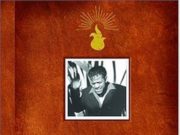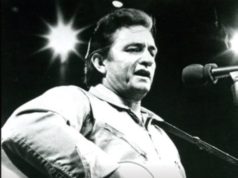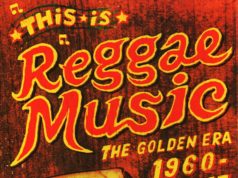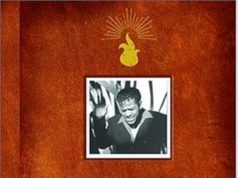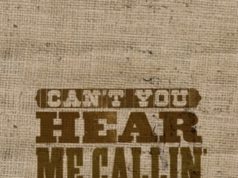 I‘m not sure about the first time I remember liking a new song by a dead person — It’s either something from Double Fantasy or Elvis Presley’s Guitar Man.
I‘m not sure about the first time I remember liking a new song by a dead person — It’s either something from Double Fantasy or Elvis Presley’s Guitar Man.
Two of John Lennon’s three best-selling hits were from the last album he made. (Just Like) Starting Over was released two weeks before his assassination on Dec. 8, 1980. After he died it became his best-selling solo song — topping the charts in Canada, the U.S. and the U.K. Woman, released a month later, went on to become his third-best selling hit.
So, in the former Beatle’s case, his biggest hit was technically released during his lifetime. The same isn’t true of Otis Redding, whose only No. 1 hit — (Sittin’ On) The Dock Of The Bay — was released a month after the singer died in a plane crash on Dec. 9, 1967.
It’s a similar story with Janis Joplin, whose only No. 1 hit Me And Bobby McGee came out in the spring of 1971 — about five months after her death. She was one track away from finishing her album Pearl when she died of a heroin overdose on Oct. 4, 1970, three days after she’d recorded the vocals for the a cappella track Mercedes Benz in a single take. The next day she was due to go in and record the vocals for Buried Alive In The Blues, which instead was issued on Pearl as an instrumental.
Jim Croce was only 30 when he was killed in a plane crash in September, 1973 — I believe just a day before his last album was set to be released. The title track from I Got A Name was already out as a single, but the followup I’ll Have To Say I Love You In A Song also became a hit. They weren’t his biggest; that honour goes to Bad, Bad Leroy Brown, which came out the previous summer. But his death made the album track Time In A Bottle, from Croce’s 1972 debut, a popular song with DJs. It was eventually released as a posthumous single (backed with Bad, Bad Leroy Brown) and became his second-biggest hit.
Country singer-songwriter Hank Williams’ biggest hit — a bona fide standard now — was released posthumously. But Your Cheatin’ Heart wasn’t initially the A-side of the single released in January 1953, just days after his quiet death at age 29 in the back of a car as he was being driven to the next town for a show. The A-side of the single was the horrifically racist Kaw-Liga — both songs recorded at Williams’ final session in September 1952.
David Bowie’s final album Blackstar was a major hit. Issued on his 69th birthday — Jan. 6, 2016 — it was recorded as an epitaph, while the singer suffered from liver cancer. He died just three days after the album was released.
Wings member and Paul McCartney’s wife/collaborator Linda McCartney recorded an album’s worth of material in the 1970s. It was eventually released in 1998 as Wide Prairie, six months after her death of breast cancer. It spawned two singles.
Joy Division weren’t really a singles band, but far and away their most popular song was released following the death of frontman and principal songwriter Ian Curtis. Love Will Tear Us Apart was issued in June 1980, two weeks after his suicide. This version — their only charting hit — was recorded weeks before his first suicide attempt in March. There are two other recorded versions: A 1979 recording from the John Peel Sessions and a first studio recording done in January 1980.
R&B singer and actress Aaliyah was killed in a plane crash on Aug. 25, 2001. That morning she filmed a music video for her song Rock The Boat. The subsequent, posthumous album I Care 4 U debuted at No. 3 when it was released in Dec. 2002. It sold 279,500 copies in its first week.
Singer-songwriter Sam Cooke had a boatload of hits, though not many No. 1s. His best-loved song was never a chart-topper, either. A Change Is Gonna Come was released just days before Christmas 1964, two weeks after Cooke was fatally shot at the Hacienda Hotel in Los Angeles. Cooke wrote the anti-racism anthem after being turned away from a Shreveport motel. He claimed the song came to him in a dream, influenced by both the release of Bob Dylan’s Blowin’ In The Wind and Martin Luther King Jr.’s I Have A Dream speech, both of which happened in 1963.
Released two years after his death, Buffalo Soldier became one of Bob Marley’s biggest songs. The iconic and influential reggae singer-songwriter died after a battle with cancer in April, 1981. Buffalo Soldier was released as a single from the posthumous album Confrontation in 1983. It was recorded in 1978.
Ritchie Valens, the subject of the movie La Bamba, certainly released his singles during his lifetime — but no full-length LPs. Both his two studio albums came out after he died at age 17 in the same plane crash as Buddy Holly and The Big Bopper — on the “day the music died” Feb. 3, 1959.
Pioneering Delta blues singer Robert Johnson had nearly a dozen 78 records released during his short lifetime — he died of unknown causes on Aug. 16, 1938. The same day Elvis died in 1977. But he didn’t rise to prominence until his works were released to modern consumers in two volumes in 1961 and 1970.
Speaking of Elvis, right off the top of this piece I mentioned Guitar Man. This album is an interesting one. It came out in January 1981, coinciding with the release of its title track single. All the songs are fairly popular tracks previously recorded and released by Presley. They were chosen because they were deemed fit for modernization. All the backing tracks were taken away and replaced with more contemporary takes. It became No. 1 on the country charts in both Canada and the U.S. and was his last Top 40 pop hit.
• • •
Area Resident is an Ottawa-based journalist, recording artist, music collector and re-seller. Hear (and buy) his music on Bandcamp, email him HERE, follow him on Instagram and check him out on Discogs.






